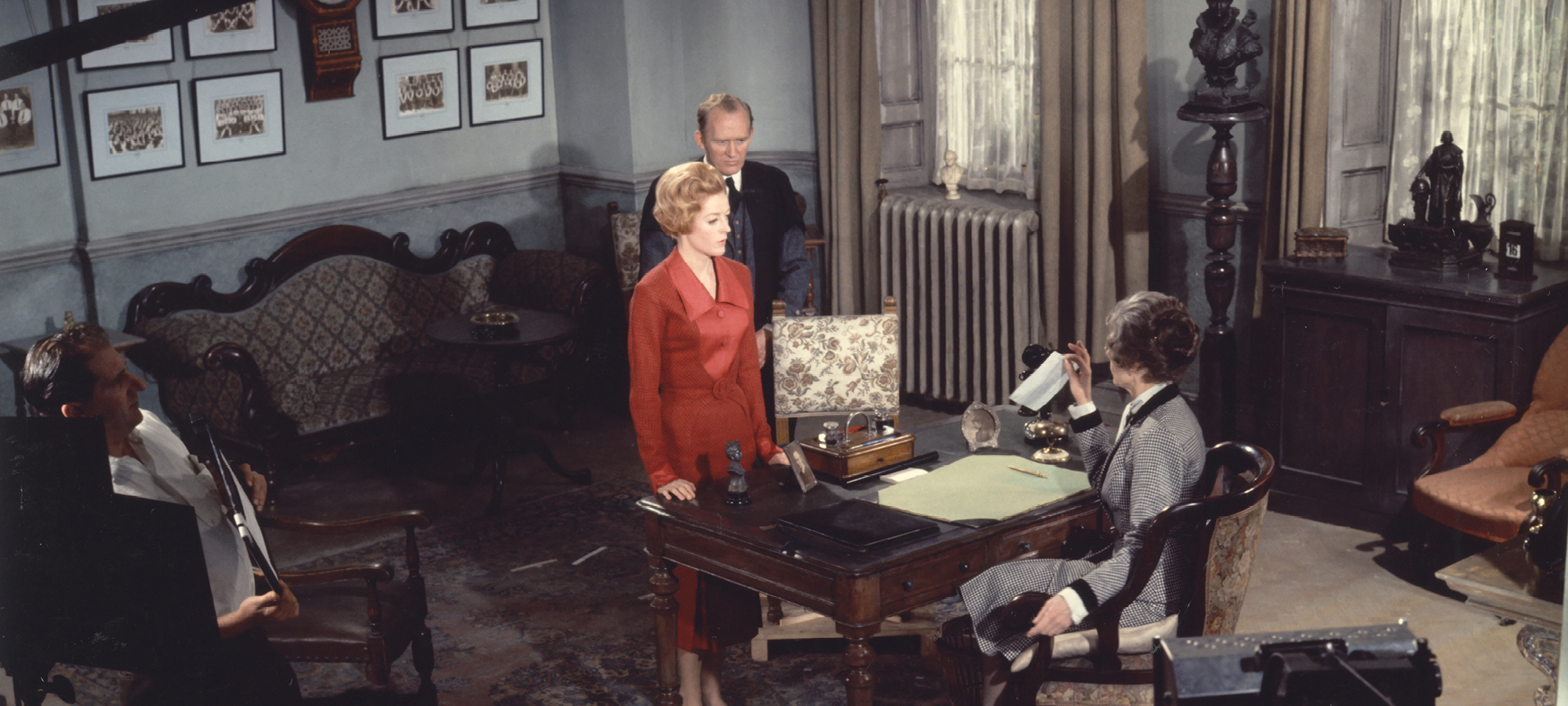
This behind-the-scenes shot of Maggie Smith in The Prime of Miss Jean Brodie (1969) is one of several seldom-seen images included in film historian Stephen Tapert’s (AM’02) book Best Actress. (Twentieth Century Fox Film Corporation/Photofest)
A new book celebrates the leading ladies who reshaped Hollywood.
As a barometer of social progress, the Academy Awards are iffy at best. But there is one Oscars category that, in film historian Stephen Tapert’s view, “come[s] closest to capturing the cultural zeitgeist”: Best Actress. As a group, the winners of that coveted honor “have changed a lot in regard to visibility, inclusivity, modes of self-expression, self-empowerment, democracy, diversity, the list goes on and on,” says Tapert, AM’02, who teaches film studies at the New York Film Academy’s Los Angeles campus.
Tapert’s new book, Best Actress: The History of Oscar-Winning Women (Rutgers University Press, 2019), recounts—in “textured and timeless” profiles, according to the New York Times—the lives and accomplishments of the Best Actress honorees from 1929 to 2018. In their stories he sees an echo of women’s history and advancement over the past century. To a person, the winners experienced Hollywood’s omnipresent sexism; many worked diligently to dismantle that and other forms of discrimination.
Ample room for progress remains. To date, only one African American woman has won Best Actress (Halle Berry for the 2001 film Monster’s Ball), and the number of nonwhite women who have received nominations is appallingly low—writer Roxane Gay notes in the foreword that the book’s publication is “also a valuable opportunity to consider who has been left out of the conversation, to consider the best of the women who have been overlooked on and off the screen.”
Tapert’s interest in the Best Actress Oscar goes back to his years at the Academy of Motion Picture Arts and Sciences. (That’s the academy, of “I’d like to thank the academy” fame.) He started out working at the organization’s library, then became a researcher for its museum, set to open later this year.
In the course of that work, Tapert was struck by the enduring influence of the Best Actress winners. A few have faded from memory (Marie Dressler, Norma Shearer), but many remain household names (Audrey Hepburn, Meryl Streep). They have gone on to become activists, philanthropists, entrepreneurs, and in one case, a princess (Grace Kelly).
Some took up social issues directly in their work, others in their off-screen lives. Jodie Foster’s performance in The Accused (1988) is widely credited with sparking public discussion of sexual assault and victim blaming; Jane Fonda, who won for Klute (1971) and Coming Home (1978), has used her public platform to advance causes including Native American rights and environmentalism.
Still others made their mark simply by persevering in an industry that has often treated women as disposable. In the 1940s, Olivia de Havilland—like Fonda, a two-time winner, for To Each His Own (1946) and The Heiress (1949)—refused to accept the anemic ingénue roles on offer at Warner Brothers, kicking off a contract dispute and lawsuit that she ultimately won. The so-called de Havilland Decision prohibited studios from keeping actors under contract for more than seven years—a change that many scholars argue reshaped Hollywood and contributed to the dismantling of the studio system.
Tapert spent several years assembling the narratives and photographs that make up Best Actress. He took special care in finding images; since the women in the book are among the most photographed in the world, he wanted to identify shots that were “special, unusual, and unexpected.” His finds include a rare color image of Susan Hayward on the set of I Want to Live! (1958) and an off-camera shot of Maggie Smith in a scene from The Prime of Miss Jean Brodie (1969).
The book also features more familiar Oscar images and stories, such as Sally Field delivering her often parodied speech for Places in the Heart (1984), and Mildred Pierce (1945) star Joan Crawford posing with her statuette while sick in bed with pneumonia. Or so she said. To this day no one knows whether she was really ill or not, but the stunt, Tapert says, “certainly got her what she wanted, which was all the attention in the papers the next morning.”
Efforts to control the public narrative are a theme in Best Actress. The first “for your consideration” ad—a type of promotion aimed at encouraging voting members of the academy to support a particular film or performance—dates back to 1948. Contemporary Oscar campaigns routinely cost millions and send actors on monthslong press tours, sometimes launching rumors that awards have been bought and paid for by studios.
Still, these commercial considerations and the forever-expanding red carpet spectacle haven’t erased the magic of the Oscars for Tapert. As an academy employee, he got to attend the ceremony and watched in person as eight of the Best Actress winners received their awards. One year in particular stands out in his memory. In 2009 the award was presented not by the previous year’s Best Actor, as was customary, but by five former Best Actresses, who welcomed a new icon into the fold.
